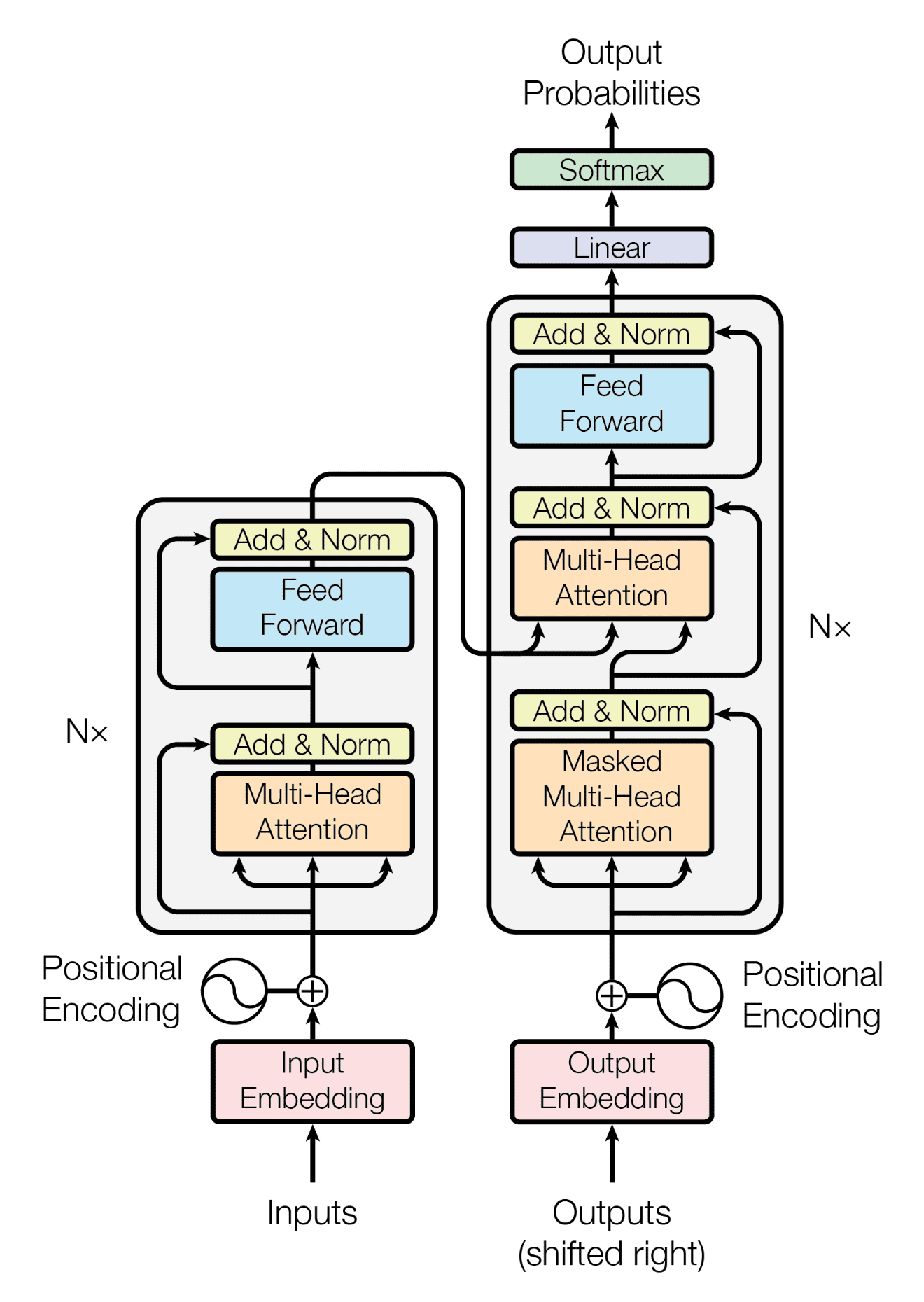The Concept That Transformed AI: Hands-On Implementation of the Transformer
 Mohd. Asaad Abrar S.
Mohd. Asaad Abrar S.The Transformer model, introduced in the seminal 2017 paper "Attention Is All You Need" by Vaswani et al., revolutionized natural language processing (NLP) by replacing sequential recurrent neural networks (RNNs) with a parallel, attention-based architecture. This blog post explores a PyTorch implementation of the Transformer, based on the Jupyter notebook attention-is-all-you-need-notebook7d2d18a8fe-implementation.ipynb. Designed for beginners, AI engineers, and business professionals, this post breaks down the Transformer’s components, provides clear code explanations, and connects the theory to real-world applications. You can experiment with the code interactively by uploading the notebook to Google Colab after cloning it to a public repository.
What Is a Transformer? A Beginner’s Overview
The Transformer processes entire sentences at once, unlike RNNs, which handle words sequentially. Its self-attention mechanism identifies relationships between words (e.g., linking "dog" to "barked" in a sentence), making it faster and more effective for tasks like translation or chatbot responses. This powers modern AI tools like Google Translate and large language models.
This implementation uses PyTorch to build a Transformer with an embedding dimension of d=512, 8 attention heads, a feed-forward dimension of dff=2048, 6 encoder and decoder layers (N=6), and a dropout rate of p=0.1. The source vocabulary (input) has 100 tokens, and the target vocabulary (output) has 50, suitable for a small-scale demonstration.
Key Components of the Transformer
Picture the Transformer as a pipeline (see Figure ). It takes an input sentence, converts it to vectors, processes it through attention and neural network layers, and outputs a result, like a translated sentence.
Figure 1: Transformer Architecture Diagram
The Transformer consists of an encoder (processes input) and a decoder (generates output). Each encoder layer includes a self-attention mechanism and a feed-forward network. The decoder adds a masked self-attention layer to focus on previous outputs. Residual connections and normalization ensure training stability (Vaswani et al., 2017).

1. Embeddings and Positional Encoding
What It Does: Converts words into numerical vectors and adds positional information.
The Embedding class maps tokens to 512-dimensional vectors, as described in Vaswani et al. (2017):
class Embedding(nn.Module):
def __init__(self, d: int, vocab_size: int):
super().__init__()
self.embedding = nn.Embedding(vocab_size, d) # Maps tokens to vectors
def forward(self, x: Tensor) -> Tensor:
return self.embedding(x) # Input: [batch, seq_len] -> Output: [batch, seq_len, d]
For an input tensor of shape [1, 4] (batch size 1, 4 tokens), it outputs [1, 4, 512]. Since Transformers process tokens in parallel, they lack inherent word order information. The PE class implements sinusoidal positional encodings, as proposed by Vaswani et al. (2017), to encode token positions:
class PE(nn.Module):
def __init__(self, d: int, p: float, max_len=100):
super().__init__()
self.pe = torch.zeros(max_len, d) # Initialize positional encoding matrix
pos = torch.arange(0, max_len, 1).unsqueeze(1) # Positions: [0, 1, 2, ...]
div = torch.pow(10_000, 2 * torch.arange(0, d, 2) / d) # Divisor for encoding
self.pe[:, 0::2] = torch.sin(pos / div) # Sine for even indices
self.pe[:, 1::2] = torch.cos(pos / div) # Cosine for odd indices
self.dropdown = nn.Dropout(p) # Dropout to prevent overfitting
def forward(self, x: Tensor) -> Tensor:
return self.dropout(x + self.pe[:x.shape[1]]) # Add encodings to embeddings
This outputs [1, 4, 512] for a source input, ensuring the model captures word order.
2. Multi-Head Self-Attention
What It Does: Enables the model to focus on relevant words in a sentence, as described in Vaswani et al. (2017).
The SelfAttention class implements scaled dot-product attention with multiple heads:
class SelfAttention(nn.Module):
def __init__(self, heads: int, d: int):
super().__init__()
self.heads = heads
self.head_dim = d // heads # 512 / 8 = 64 per head
self.Q = nn.Linear(self.head_dim, self.head_dim) # Query projection
self.K = nn.Linear(self.head_dim, self.head_dim) # Key projection
self.V = nn.Linear(self.head_dim, self.head_dim) # Value projection
self.Linear = nn.Linear(d, d) # Final linear layer
self.norm = nn.LayerNorm(d) # Layer normalization
def forward(self, q: Tensor, k: Tensor, v: Tensor, mask=None) -> Tensor:
batch, q_len, _ = q.shape
# Reshape for multi-head: [batch, seq_len, d] -> [batch, seq_len, heads, head_dim]
Q = self.Q(q.reshape(batch, q_len, self.heads, self.head_dim))
K = self.K(k.reshape(batch, k_len, self.heads, self.head_dim))
V = self.V(v.reshape(batch, v_len, self.heads, self.head_dim))
# Compute attention scores: QK^T / sqrt(d)
QK = torch.einsum("bqhd, bkhd -> bhqk", [Q, K]) # Efficient matrix multiplication
scale = QK / math.sqrt(self.d) # Scale to stabilize gradients
if mask is not None: # Mask future tokens in decoder
scale = scale.masked_fill(mask == 0, float("-inf"))
softmax = F.softmax(scale, dim=3) # Probabilities
output = torch.einsum("bhqk, bvhd -> bqhd", [softmax, V]) # Weighted sum
concat = output.reshape(batch, q_len, self.d) # Concatenate heads
linear = self.Linear(concat) # Final projection
addnorm = self.norm(linear + q) # Residual connection + normalization
return addnorm
The attention mechanism uses the formula:
Attention(Q, K, V) = softmax((Q K^T) / √_d_k_) V
The scaling factor √_d_k_ (where d=512) prevents large dot-product values, as noted by Vaswani et al. (2017). The einsum function optimizes matrix operations. In the decoder, a causal mask ensures predictions only use previous tokens, critical for autoregressive tasks.
3. Feed-Forward Networks
What It Does: Transforms each token’s representation to capture complex patterns.
The FeedForward class, based on Vaswani et al. (2017), applies two linear layers with a ReLU activation:
class FeedForward(nn.Module):
def __init__(self, d: int, dff: int):
super().__init__()
self.ff = nn.Sequential(
nn.Linear(d, dff), # 512 -> 2048
nn.ReLU(), # Non-linearity
nn.Linear(dff, d) # 2048 -> 512
)
self.norm = nn.LayerNorm(d) # Normalize
def forward(self, x: Tensor) -> Tensor:
return self.norm(x + self.ff(x)) # Residual connection
This outputs [1, 4, 512] for the encoder, preserving the input shape.
4. Encoder and Decoder Layers
The EncoderLayer combines self-attention and feed-forward networks, while the DecoderLayer adds masked self-attention to prevent attending to future tokens. The EncoderDecoder class stacks 6 layers of each, as recommended by Vaswani et al. (2017):
class EncoderDecoder(nn.Module):
def __init__(self, heads: int, d: int, dff: int, N: int):
super().__init__()
self.enc_layer = nn.ModuleList([EncoderLayer(heads, d, dff) for _ in range(N)])
self.dec_layer = nn.ModuleList([DecoderLayer(heads, d, dff) for _ in range(N)])
def forward(self, src: Tensor, trg: Tensor) -> Tensor:
for enc in self.enc_layer:
src = enc(src, src, src) # Encoder processes input
for dec in self.dec_layer:
trg = dec(trg, src, src, self._make_mask(trg)) # Decoder uses encoder output
return trg
def _make_mask(self, trg):
batch, trg_len, _ = trg.shape
mask = torch.tril(torch.ones(trg_len, trg_len)) # Causal mask
return mask.reshape(batch, 1, trg_len, trg_len)
For a source input [1, 4] and target [1, 2], the output is [1, 2, 512].
5. Final Classification Layer
The Classifier maps the decoder’s output to the target vocabulary, producing probabilities over tokens:
class Classifier(nn.Module):
def __init__(self, d: int, trg_vocab_size: int):
super().__init__()
self.linear = nn.Linear(d, trg_vocab_size) # 512 -> 50
def forward(self, x: Tensor) -> Tensor:
return self.linear(x) # Output: [1, 2, 50]
This aligns with the output layer described by Vaswani et al. (2017) for tasks like translation.
6. Full Transformer Model
The Transformer class integrates all components, as outlined in the original paper:
class Transformer(nn.Module):
def __init__(self, d: int, heads: int, dff: int, N: int, src_vocab_size: int, trg_vocab_size: int, p: float):
super().__init__()
self.encdec = EncoderDecoder(heads, d, dff, N)
self.pe = PE(d, p)
self.src_embeddings = Embedding(d, src_vocab_size)
self.trg_embeddings = Embedding(d, trg_vocab_size)
self.classifier = Classifier(d, trg_vocab_size)
def forward(self, src: Tensor, trg: Tensor) -> Tensor:
src = self.pe(self.src_embeddings(src)) # Embed + encode position
trg = self.pe(self.trg_embeddings(trg))
output = self.encdec(src, trg) # Process through encoder-decoder
return self.classifier(output) # Predict tokens
The output is [1, 2, 50], suitable for next-word prediction.
Real-World Business Applications
Transformers have transformative applications in business:
Customer Support: Build chatbots for instant query resolution, reducing support costs (e.g., using fine-tuned models from Hugging Face).
Content Creation: Generate marketing copy or summarize reports, streamlining content workflows.
Sentiment Analysis: Analyze customer reviews to inform product strategies, as seen in tools like AWS Comprehend.
Translation: Support global markets by translating product descriptions in real-time.
You can extend this implementation by fine-tuning it on datasets from Kaggle or integrating with frameworks like LangChain for agentic AI applications.
Why This Implementation Stands Out
This implementation is modular, allowing easy adjustments (e.g., changing heads or d). The use of einsum optimizes matrix operations for efficiency, a practical choice for scaling. It serves as a foundation for advanced tasks, such as fine-tuning with Hugging Face’s Transformers library or experimenting with APIs for enhanced NLP .
Glossary
Embedding: A vector representing a word’s meaning.
Self-Attention: Weighs the importance of each word in a sentence.
Positional Encoding: Adds word order information.
Encoder/Decoder: Processes input/output in the Transformer.
Feed-Forward Network: Transforms data with neural layers.
Conclusion
This PyTorch implementation of the Transformer, grounded in Vaswani et al. (2017), makes a complex model accessible to beginners and valuable for experts. By combining clear code, practical examples, and business applications, it bridges theory and practice. Whether you’re exploring NLP or building AI solutions, this code is a stepping stone to mastering Transformers.
References
Vaswani, A., Shazeer, N., Parmar, N., Uszoreit, J., Jones, L., Gomez, A. N., Kaiser, Ł., & Polosukhin, I. (2017). Attention Is All You Need. arXiv preprint arXiv:1706.03762. https://arxiv.org/abs/1706.03762
Notebook:
attention-is-all-you-need-notebook7d2d18a8fe-implementation.ipynb
Subscribe to my newsletter
Read articles from Mohd. Asaad Abrar S. directly inside your inbox. Subscribe to the newsletter, and don't miss out.
Written by
